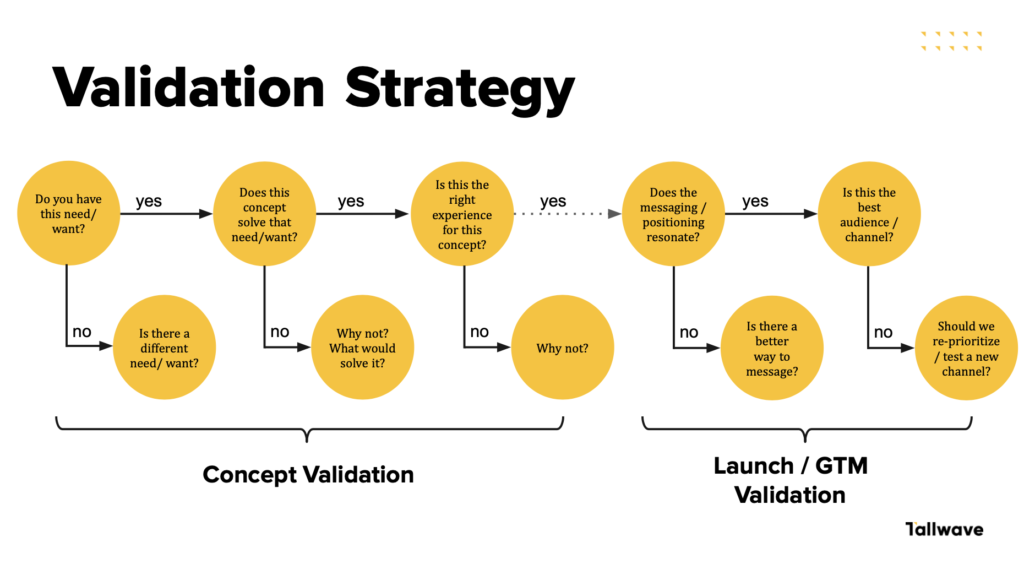Whether you’re nurturing prospects or guiding product qualified leads through a free trial, intentionally crafting their journey allows you to coach potential buyers toward a purchase decision. Weak points in your nurture could be the cause of a low conversion rate.
Understanding the mechanics of a great nurture hinges largely on the concept of time to value (TTV), which refers to the time between when a customer takes an action and when the value of that action becomes obvious to them. TTV can help you diagnose where your nurture might be weak. For example, if you’re seeing low conversions from your free trial, it could be the case that your TTV is actually longer than the trial itself. This concept could apply to many points in the customer journey. Marketo found that 96% of website visitors aren’t ready to buy based on their initial visit. That’s when nurturing strategies come into play. Your nurture strategy helps to move customers through the marketing funnel with touch points that help communicate the value your product or service provides.
Tweaks to the nurture strategy can improve the customer experience and increase customer engagement and conversions. We worked with a SaaS company to revamp their nurture strategy to do just this. Originally, their customer onboarding experience had an ambiguous timeline and the high value actions weren’t made clear. We recommended changes that pivoted to an action-based nurture that reduced friction and personalized touch points. By identifying three critical stages in the trial onboarding period, we divided actions between what we called work, play and commit. We then frontloaded the sign up friction in the work stage. That allowed us to reduce the TTV and move customers through the play stage and toward commitment.
Also read: Uncovering the Root Cause of Low Conversion Rates to Unlock Continual Growth
If you’re trying to improve your customer nurture journey, there are some key best practices to incorporate. Here’s what to know.
Best Practices
Statistics show that 74% of companies are prioritizing improving conversion rates over the next 12 months, indicating this is a more important business need than driving traffic to their websites or even increasing customer lifetime value.
Here’s what to keep in mind if you are looking to revamp your nurture strategy to optimize your conversions and increase customer engagement:
- Personalize: No one wants to feel like they’re receiving a cookie-cutter message from you so take the time to personalize your messaging based on customer actions. This goes beyond simply addressing them by name and takes into consideration where they might be in the journey.
- Segment your lists: You can’t personalize if you aren’t segmenting, so be sure to divide your list by specific data points. There are many ways you can do this beyond the basic demographics of age and gender. You can create segments such as location, transaction history, web browsing history, and even device type.
- Get creative and specific. Create multiple touch points: You should think of your nurture as greater than just one email. Consider all the channels you can use to nurture your customers — email, text message, retargeting ads. Make your communication ecosystem work together to create a world that pulls your customer in.
- Include a call-to-action: In all your messages there should be a clear call-to-action that helps your customers understand their next steps. Keep it short and compelling.
- Split test: Develop the practice of being data-lead by A/B testing all of your messaging. It’s hard to be entirely sure which subject line, call-to-action or topics will resonate with your audience, so let the data lead the way.
No one wants to feel like they’re receiving a cookie-cutter message from you so take the time to personalize your messaging based on customer actions.
Make your communication ecosystem work together to create a world that pulls your customer in.
Product-Focused Campaign
Educate potential customers on everything your product can help them achieve with a product-focused nurture that highlights your most important features.
Purpose: Become a trusted thought leader for your prospects as they advance through the sales cycle.
Strategy: Highlight features that solve pain points using case studies, white papers, and internal data.
Success metric: You’ll want to determine if customers are using the specific features you’re highlighting for them in your nurture. This can tell you if the features you’re explaining are resonating with them or if you need to find more relevant features for their goals.
Competitive Campaign
A competitive campaign is more aggressive than other nurtures on this list. For this type of a nurture you’ll get specific about what differentiates your product, and what users have to lose if they choose one of your competitors.
Purpose: If you have a main competitor that customers are constantly weighing against you, a competitive campaign can work to overcome their objections by educating them about how you are better positioned to help them achieve success.
Strategy: Use specific information gathered during sales calls to address main objections without coming across as negative. Any press you’ve obtained or industry intelligence that proves your worth can be helpful here.
Success metric: Count actions such as signing up for your trial or upgrades to determine the success of this campaign.
Promotional Nurturing
Promotional nurturing can help move prospects across the finish line with a limited time, exclusive offer that encourages them to act now.
Purpose: Promotional nurturing helps you close a sale when you are in the purchase stage of the cycle.
Strategy: If you’re working with a big account that could significantly impact your business, offer special pricing or access to upgraded features based on what you know their needs are. For smaller accounts, adding a discount to your email nurture toward the end of the trial stage can inspire users to upgrade.
Success metric: For account-based selling, assess how many times you are able to close the sale. For product qualified leads, review how often your discount code has been used.
Also read: Optimizing paid media strategies to continually increase leads year over year
Your goal should be to help your customer get the value they are seeking faster by sending the right message at the right time.
How to Assess & Redesign Your Nurture Strategy
Improving your nurture strategy starts with assessing user behavior to identify where you can aid with value realization. This might include collating more data on your users so you can do a better job segmenting your nurtures. It could also include competitive research that helps you identify other journeys your users might be experiencing as they compare your service.
Use this research to map your entire customer conversion experience to identify opportunities to increase customer engagement. Then, identify gaps in content and specific trigger points that could reduce the time to value. If you find quick wins, implement these immediately while preparing your campaign overhaul.
The Bottom Line
There are so many ways you can nurture your relationship with your customers to increase engagement, prove your value and turn trial users into paying clients. The key to it all is constantly iterating by using data to understand what your customers are experiencing at each step in the journey. Customizing your messaging to respond to their actions and experiences will help you personalize each nurture touch point, increase customer engagement and prove the value of your product or service.






